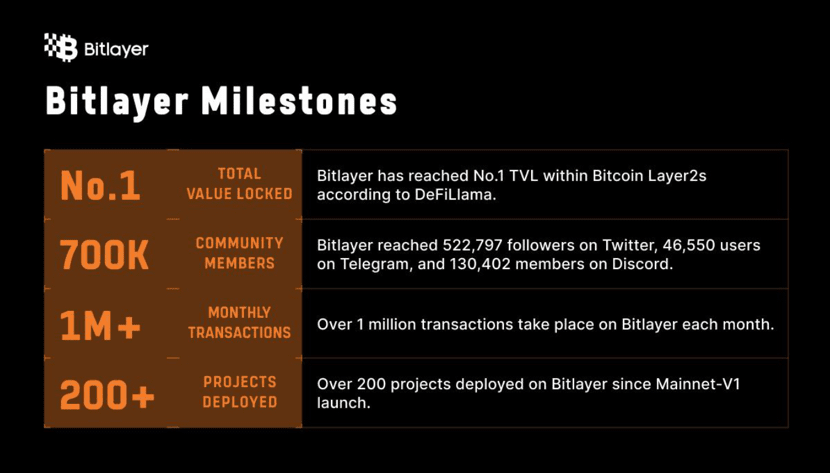The Awakening Moment of One BTC
In July 2025, a programmer named Zhang Ming holding 3 Bitcoins made a decision: he did not transfer BTC to an exchange for cashing out but instead converted it to YBTC through Bitlayer's BitVM Bridge and deposited it into a cross-chain lending pool. Three months later, these 3 BTC not only maintained their market value growth but also earned 1.2 BTC in returns by providing liquidity on the Sui chain.
This story is accelerating replication among 120 million Bitcoin wallet addresses. The collaboration between Bitlayer and CreatorPad is completing a silent revolution: teaching 'digital gold' to learn 'self-appreciation', transforming Bitcoin from an 'island of value storage' into a 'continent of programmable finance.'
I. The 'Game of Ice and Fire' for BTCFi: An Undervalued Trillion-Dollar Market
1. Institutional 'Yield Anxiety' and Retail 'Tool Scarcity'
Franklin Templeton mentioned in its Q2 2025 financial report: 'We hold $116.7 million in Bitcoin, but how to generate compound returns comparable to stocks and bonds is an unsolved problem in the industry.' This anxiety is not unique—global Bitcoin ETF holdings have surpassed $50 billion, but the annualized returns of these assets have long been below 2%, far lower than traditional financial products.
On the other hand, ordinary retail investors are facing a 'tool shortage.' Bitcoin on-chain transfer fees often exceed tens of dollars, and the smart contract functionality is nearly non-existent, making participation in DeFi possible only through centralized platforms as a 'curved rescue.' Bitlayer co-founder Charlie pointed directly to the core issue in an interview: 'What Bitcoin holders need is not another exchange, but a set of 'financial toolkits' that allows BTC to earn interest, arbitrage, and invest directly on-chain.'
2. Technical Breaking: A Paradigm Shift from 'Locking' to 'Liquidity'
The emergence of BitVM has opened a door. This Turing-complete virtual machine based on Bitcoin scripts uses a combination of 'fraud proofs + zero-knowledge proofs' to give the Bitcoin mainnet the capability to verify arbitrary computations. For example: if the Bitcoin mainnet is a 'gold vault,' BitVM is the 'smart shelf in the vault,' ensuring the security of gold while allowing every gram of gold to circulate and generate returns.
Bitlayer's innovation lies in that it does not attempt to 'transform Bitcoin' but rather 'empower Bitcoin.' Through BitVM Bridge, BTC can be converted 1:1 to YBTC—this token with 'yield genes' can be used for staking and lending on the Bitlayer network, can earn liquidity returns through cross-chain channels running to ecosystems like Base and Arbitrum, and even participate in NFT minting on the Cardano chain. This approach of 'not altering Bitcoin itself, yet making it ubiquitous' is the core reason for its support from top mining pools such as Antpool and F2Pool.
II. Bitlayer's 'Dual Engine': The Symbiotic Philosophy of Security and Efficiency
1. BitVM Bridge: When Cross-Chain Bridges Learn 'Self-Correction'
Traditional cross-chain bridges are like 'express delivery transfer stations' that rely on the honesty of delivery personnel (multi-signature nodes), often resulting in lost or wrong items. In contrast, BitVM Bridge functions more like an 'automatic sorting system,' with all circulation rules for packages (transactions) written in the Bitcoin mainnet's scripts:
• When you transfer BTC to Layer 2, the system will freeze the BTC on the mainnet and simultaneously generate an equivalent amount of YBTC on Layer 2, all without the need for third-party intervention;
• If someone tries to fake a transaction, any node can initiate a 'challenge,' and the Bitcoin mainnet will automatically verify and revoke the malicious operation, while the challenger can receive a reward from the violator's margin.
This 'prepayment, post-verification, traceable' mechanism directly ties cross-chain security to the Bitcoin mainnet. Data shows that in the three months since the launch of the BitVM Bridge mainnet, it has processed 120,000 cross-chain transactions with zero incidents, while the average failure rate of traditional cross-chain bridges during the same period was 0.3%.
II. Bitlayer Network: Bitcoin's 'DeFi Highway'
If BitVM Bridge is the 'toll booth', then the Bitlayer network is the 'highway.' It adopts a 'Bitcoin Rollup' architecture—all transaction computations are completed on Layer 2, but the final results are compressed into cryptographic proofs on the Bitcoin mainnet. This design brings about three disruptions:
• Speed: 10 milliseconds transaction confirmation time, 30 times faster than Ethereum, making order grabbing and arbitrage free from 'on-chain congestion';
• Cost: A loan transaction fee is only 0.0008 BTC, which is 1/50 of the Bitcoin mainnet;
• Compatibility: Supports direct deployment of Solidity code, allowing Ethereum developers to reuse 90% of their code when migrating DApps.
The 'Lightning Execution Engine' released in summer 2025 has further pushed its TPS beyond 5000, meaning that the Bitcoin ecosystem can finally support high-frequency applications like 'decentralized exchanges' and 'perpetual contracts.' Just as highways enabled cars to replace horse-drawn carriages, Bitlayer is liberating Bitcoin DeFi from the 'ox cart era.'
III. The 'Ecological Magic' of CreatorPad: Bringing Innovation from 'Technology' to 'Users'
The role of CreatorPad is not simply as an 'incubator' but as an 'ecological translator.' It has done three things to transform Bitlayer's technical advantages into user-accessible value:
1. Developers' 'Zero Threshold Entry'
Through CreatorPad's 'One-Click Migration Tool,' DeFi projects on Ethereum can be reborn on the Bitlayer network in just three steps: importing smart contract code, automatically adapting to the BitVM interface, and generating a YBTC version of the interactive interface. This 'low-code' approach has allowed over 100 projects to complete migration in two months, including lending protocols that once managed $1 billion in assets on Ethereum.
2. User 'Gamified Participation'
The 'BTCFi Adventure' designed by CreatorPad has completely changed the dilemma of 'airdrops being mere volume boosters.' Users no longer mechanically click to transfer; instead, they complete tasks as if playing an RPG game:
• Beginner Task: Exchange 1 type of token using YBTC on a cross-chain DEX to unlock the 'Cross-Chain Traveler' badge;
• Advanced Task: Combine liquidity pools from 3 chains for arbitrage, earn the title of 'Strategy Master,' and double the rewards;
• Hidden Task: Discover and report smart contract vulnerabilities to directly share 10% of the project security fund.
This 'play-to-earn' model has led to a 300% growth in active users on Bitlayer within 30 days, with a retention rate of 65%—far exceeding the industry average of 20%.
3. Institutions' 'Customized Channels'
To meet the compliance needs of institutions like Franklin Templeton, CreatorPad has collaborated with Bitlayer to develop an 'Institutional Grade YBTC Pool':
• The flow of funds is fully traceable on-chain, meeting SEC audit requirements;
• Built-in 'circuit breaker mechanism' that automatically converts YBTC back to BTC when market fluctuations exceed a threshold, avoiding systemic risk;
• Supports 'Yield Layering', allowing institutions to choose conservative (only staking) or aggressive (including leveraged arbitrage) strategies.
This 'compliance + flexibility' solution attracted $200 million in funds within just one week of launching the first institutional-grade YBTC pool.
IV. Future Vision: When Bitcoin Becomes the 'Financial Operating System'
In the autumn of 2025, the Bitlayer V2 version will unlock three new scenarios, completely rewriting Bitcoin's 'User Manual':
1. The Bidirectional Flow of 'Bitcoin + Real Assets'
Through cooperation with IoT public chains, YBTC will be directly usable for leasing servers and paying logistics costs—such as a cloud service company accepting YBTC payments while staking YBTC on the Bitlayer network to earn interest, forming a closed loop of 'spending equals investing.'
2. The Explosion of 'Cross-Chain Derivatives'
The Bitlayer network will support complex products such as 'BTC-ETH Volatility Swaps' and 'YBTC-USDC Perpetual Contracts.' Imagine this: you can use 1 YBTC as margin while opening different directional hedge positions on 5 chains, with all profits and losses automatically settled in YBTC, without worrying about cross-chain settlement delays.
3. The Evolution of 'Community Governance'
Users holding YBTC can not only vote to determine protocol parameters but also initiate new feature development through 'proposal crowdfunding'—for example, if a community proposal wants to develop a 'YBTC insurance pool', as long as it receives 100,000 YBTC in support votes, CreatorPad will match development funding and incubate the project.
Epilogue: Your BTC should not just lie in your wallet
When Zhang Ming looked at his 3 BTC transformed into a 'golden goose that lays eggs' through YBTC, he may not have realized that he was participating in a financial revolution. The collaboration between Bitlayer and CreatorPad essentially equips Bitcoin with an 'engine'—it is no longer just cold digits but a 'living asset' that can flow, combine, and create new value.
Now, the ticket to this revolution is in your hands:
• Open your wallet and convert dormant BTC into YBTC through the BitVM Bridge, experiencing its power to 'run' in a multi-chain ecosystem;
• Join CreatorPad's 'Ecological Co-Builders Program' to vote for your favorite DApps and even submit your own innovative ideas;
• Follow Bitlayer's 'Lightning Test Network' to get a sneak peek at new features that enable BTC to participate in NFT minting and AI computing power trading.
The future of Bitcoin has never been about 'how much it will rise to' but rather 'how many things it can do.' When Bitlayer teaches Bitcoin to 'think,' and CreatorPad teaches ordinary people to 'navigate,' the golden age belonging to BTCFi has just begun.



